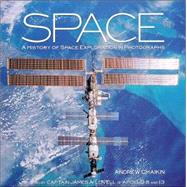
Andrew Chaikin served on the Viking Mars missions and was a researcher at the Smithsonian's Center for Earth and Planetary Studies. He is the author of A Man on the Moon, the basis for the Emmy Award-winning HBO miniseries, From the Earth to the Moon. He is a regular commentator on NPR's Morning Edition.
Captain James A. Lovell flew on the Gemini 7 and Gemini 12 missions, navigated Apollo 8 and commanded Apollo 13.
| Foreword | p. 8 |
| Author's Preface | p. 12 |
| Introduction: Dreams of Space | p. 14 |
| Leaving the Cradle | p. 24 |
| The Race for the Moon | p. 46 |
| Changing Horizons | p. 98 |
| Space Shuttles and Space Stations | p. 166 |
| Through Rugged Ways to the Stars | p. 198 |
| The Twenty-First Century | p. 230 |
| Acknowledgments and Index | p. 253 |
| Table of Contents provided by Ingram. All Rights Reserved. |
The New copy of this book will include any supplemental materials advertised. Please check the title of the book to determine if it should include any access cards, study guides, lab manuals, CDs, etc.
The Used, Rental and eBook copies of this book are not guaranteed to include any supplemental materials. Typically, only the book itself is included. This is true even if the title states it includes any access cards, study guides, lab manuals, CDs, etc.